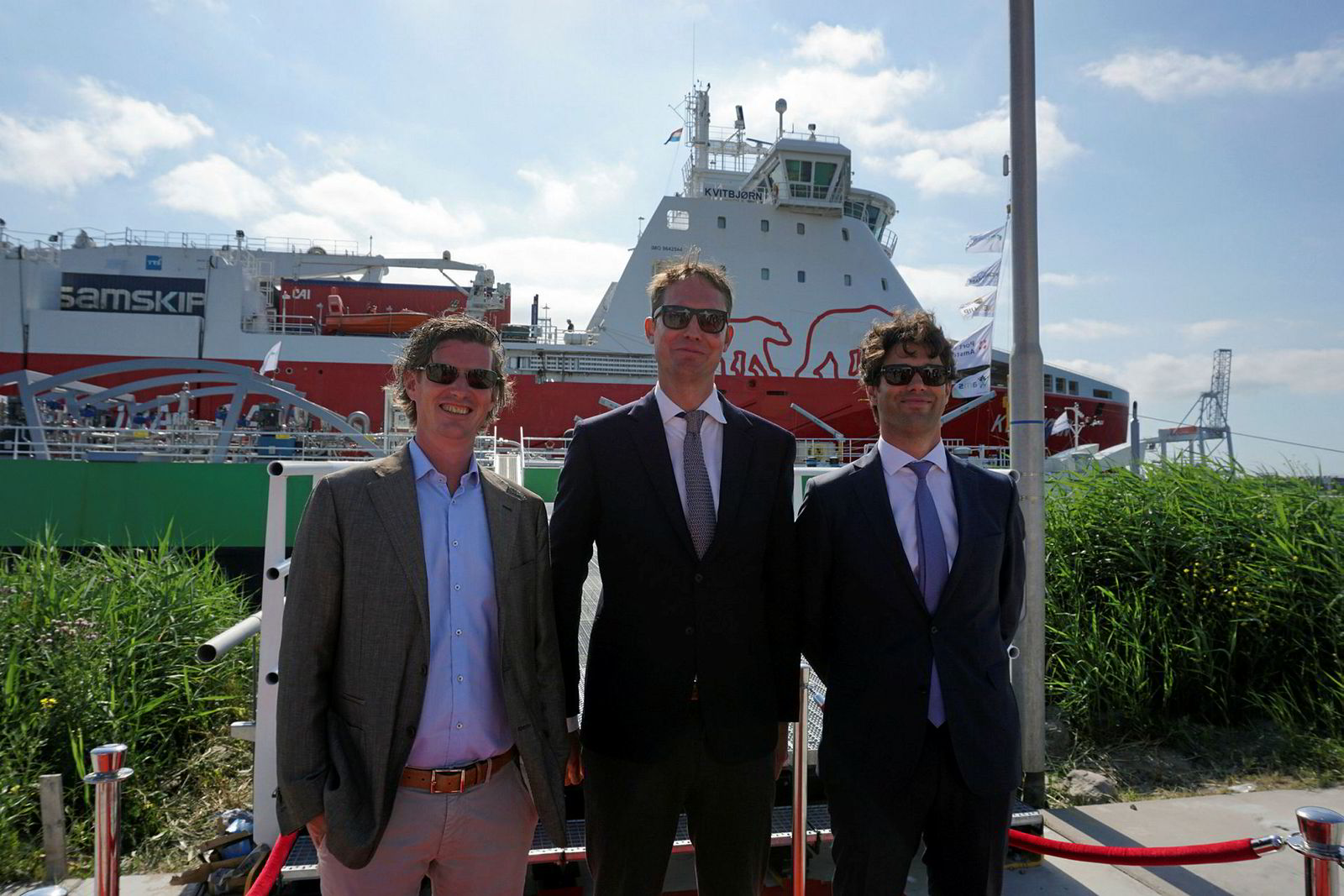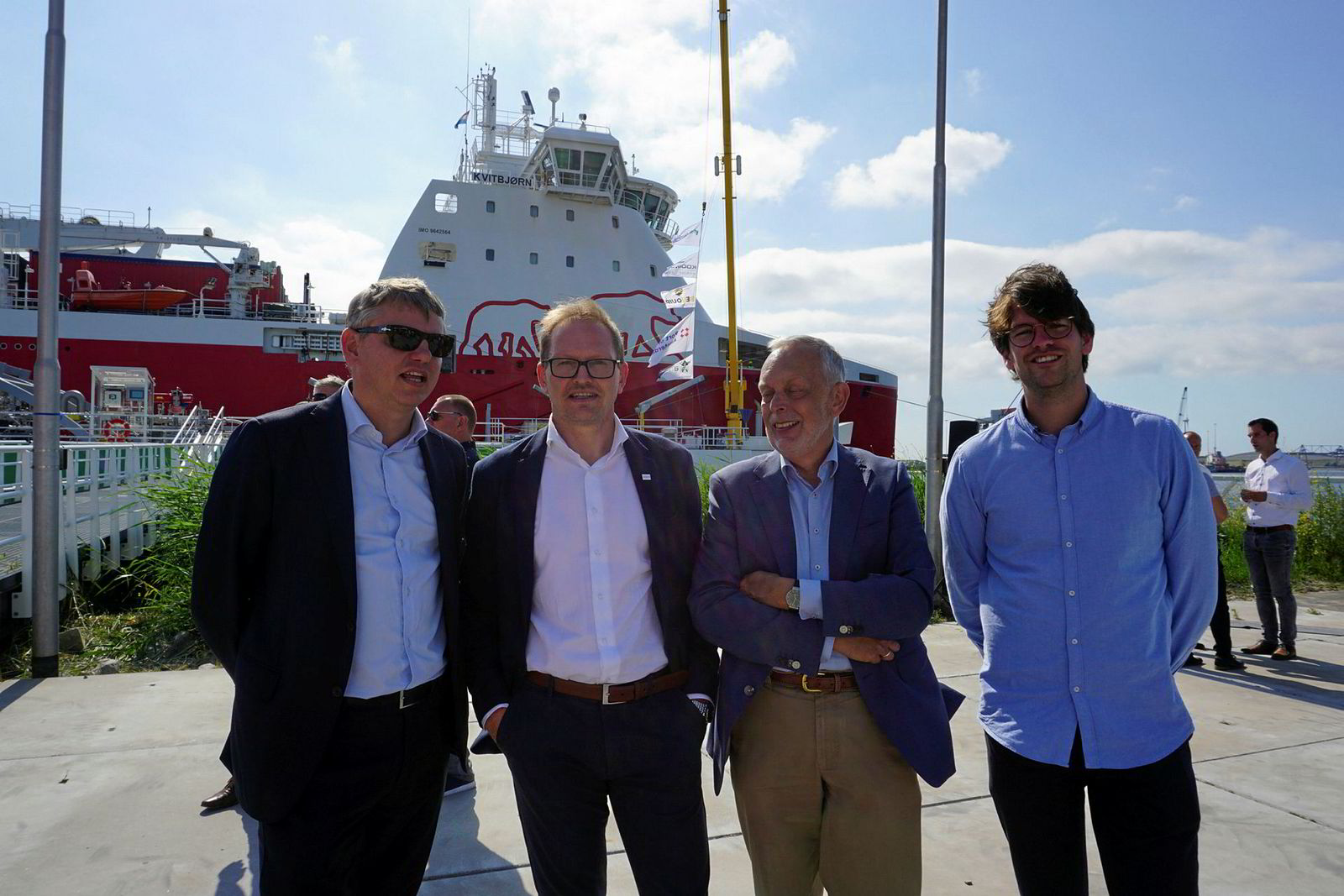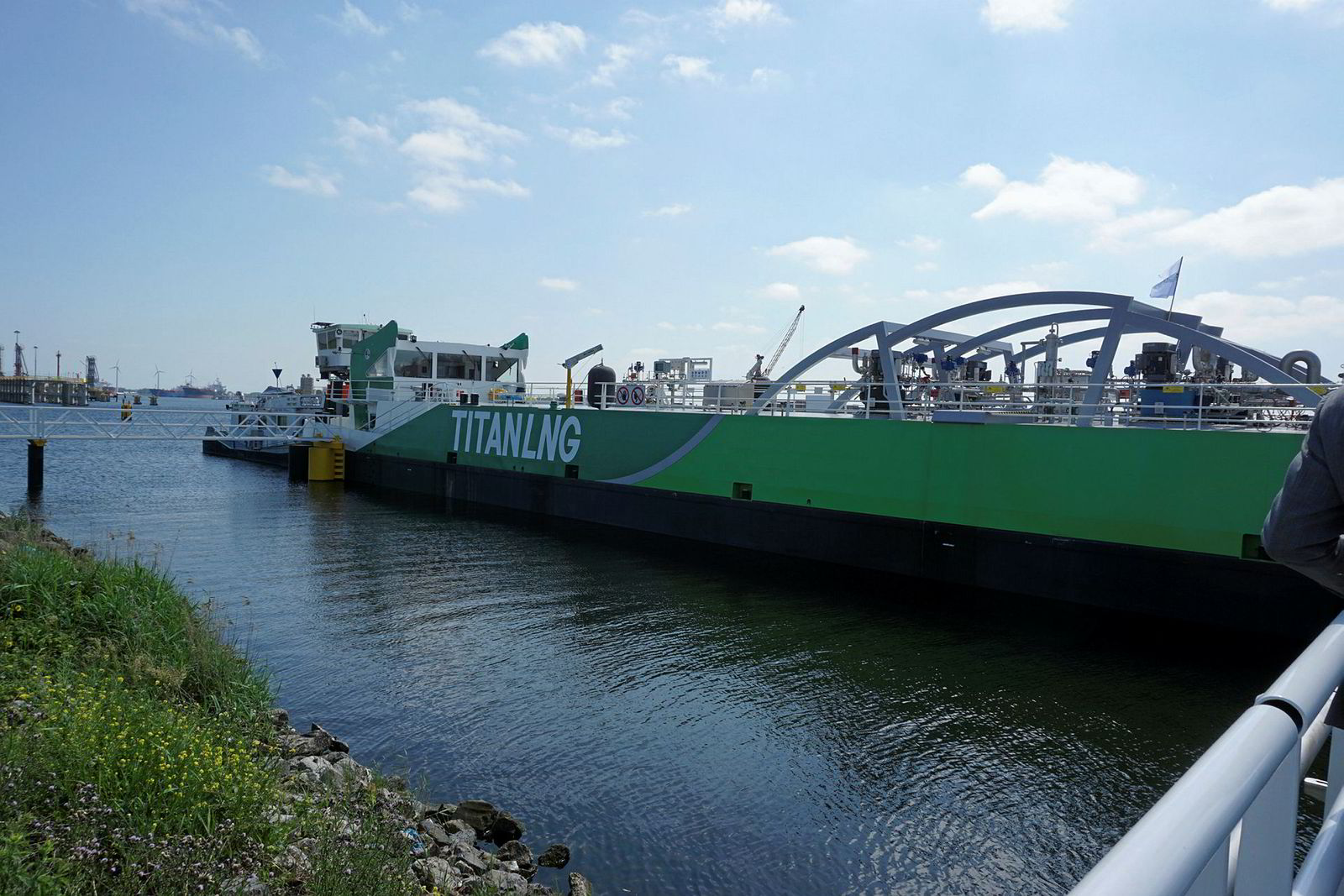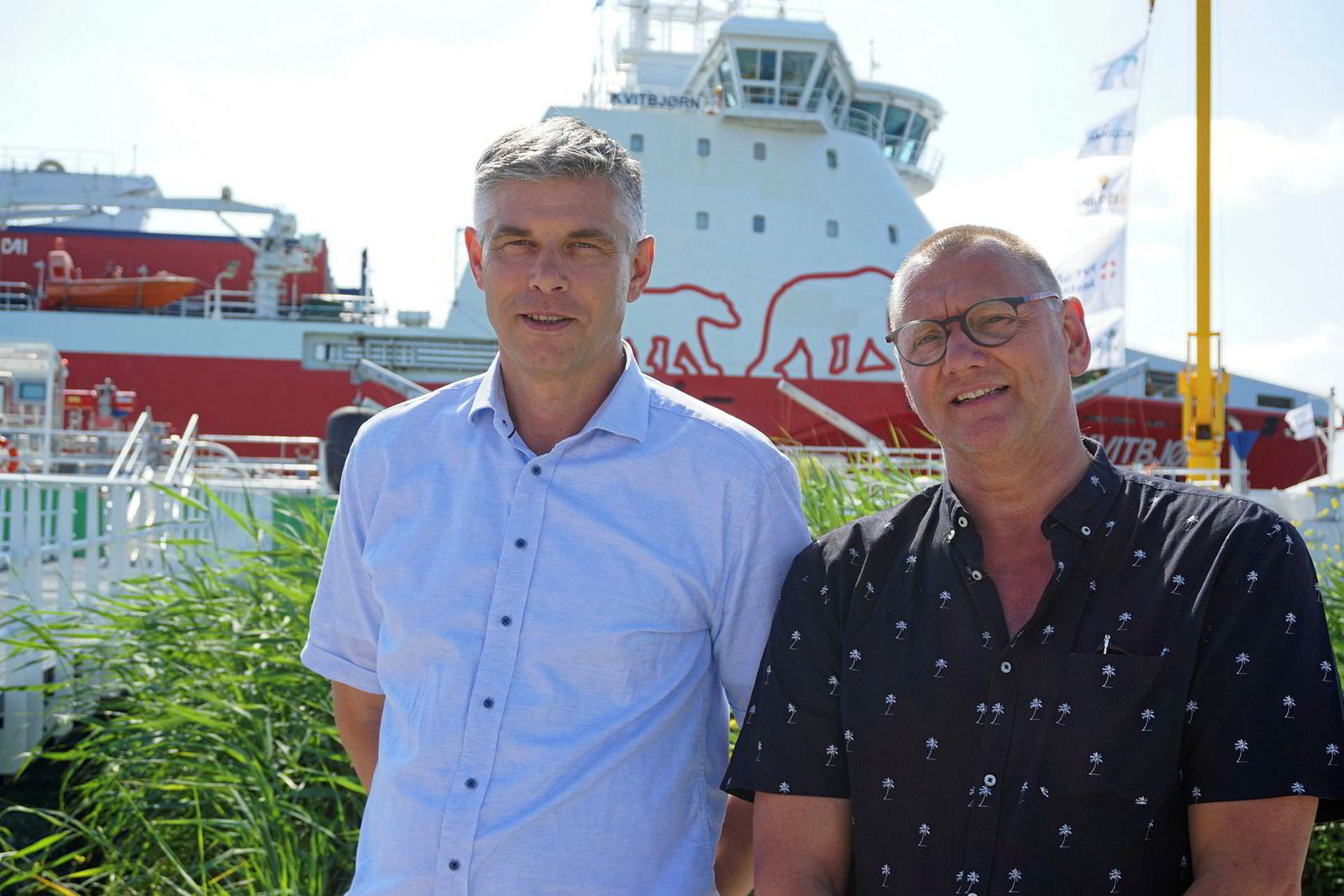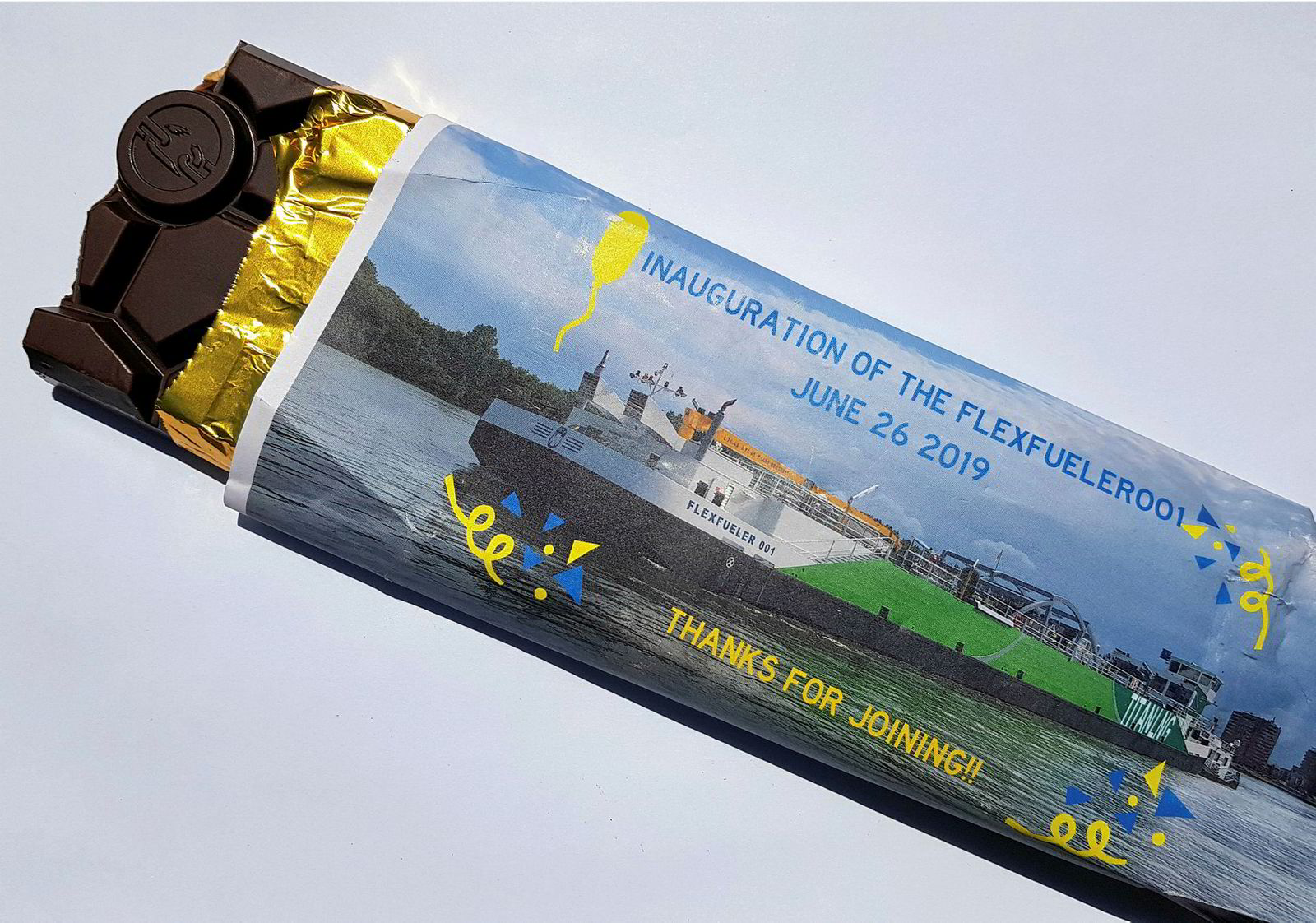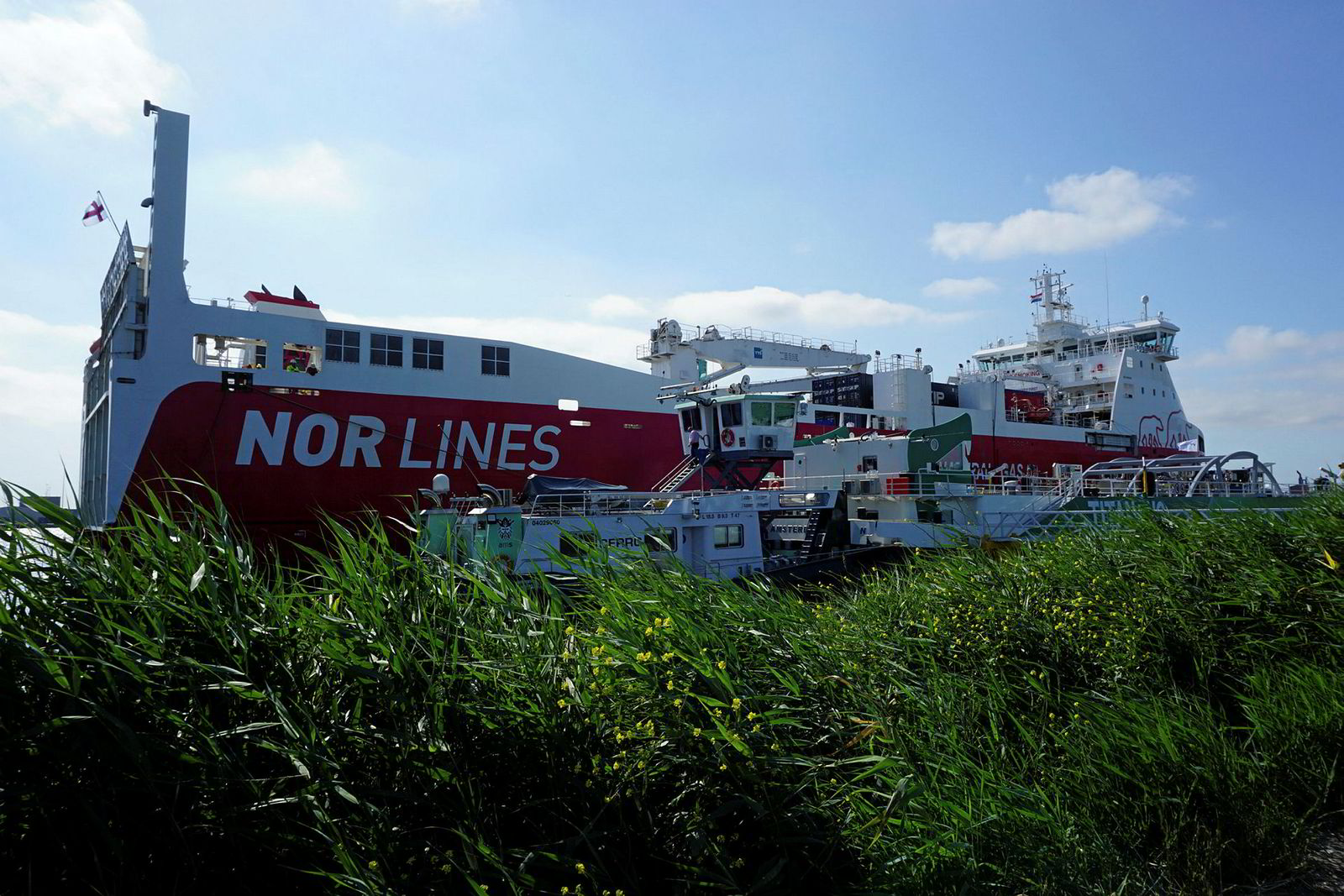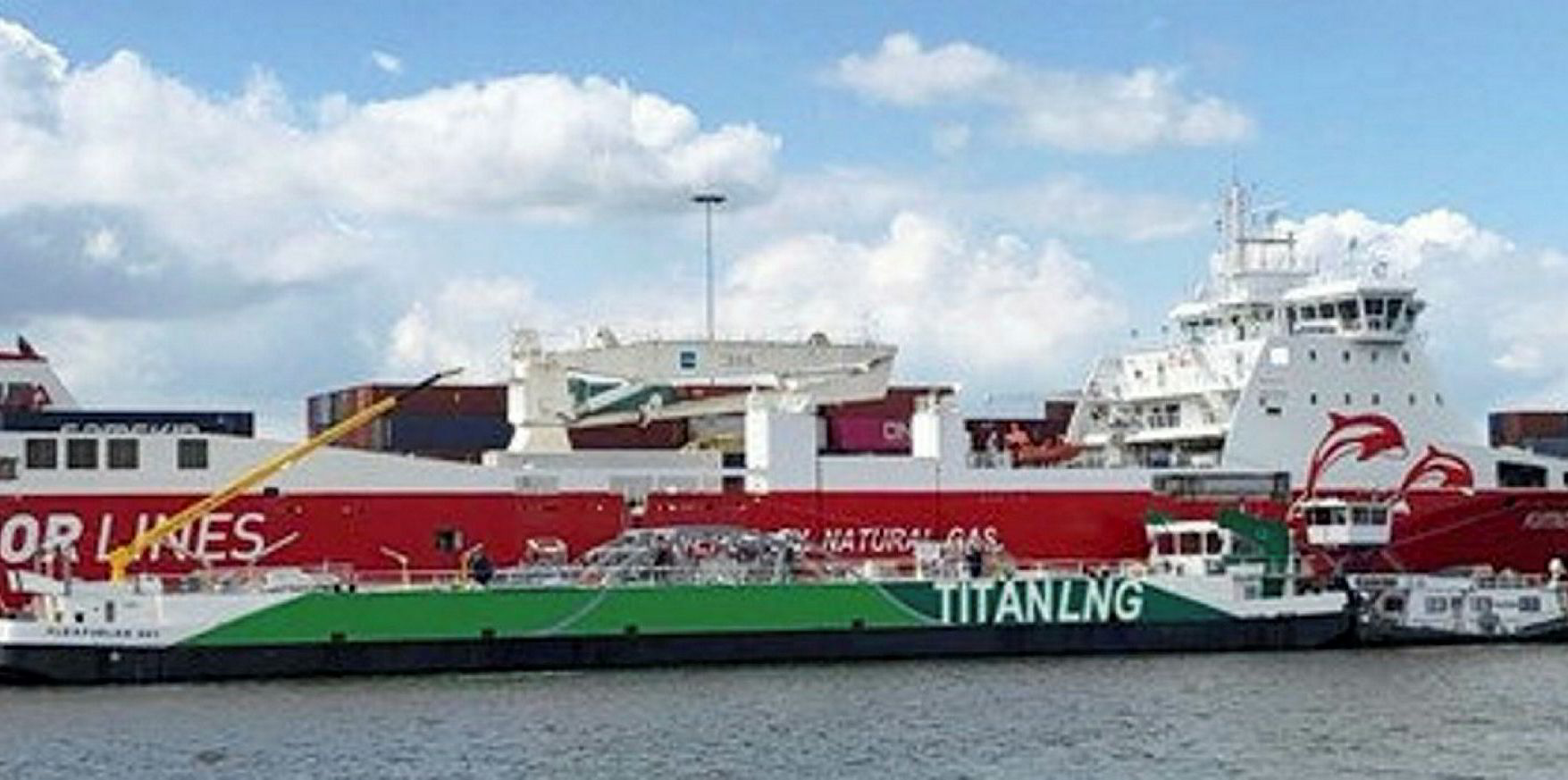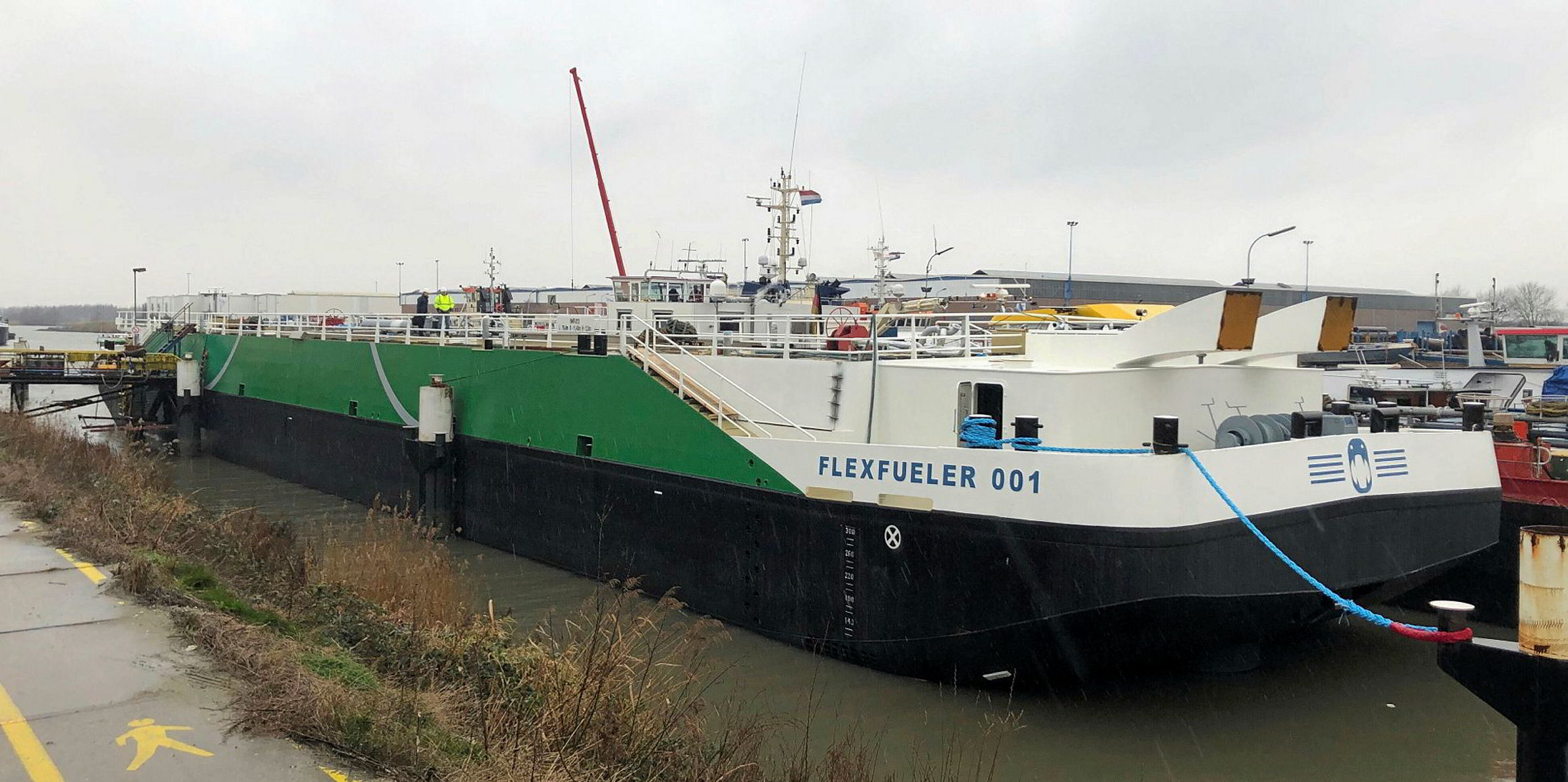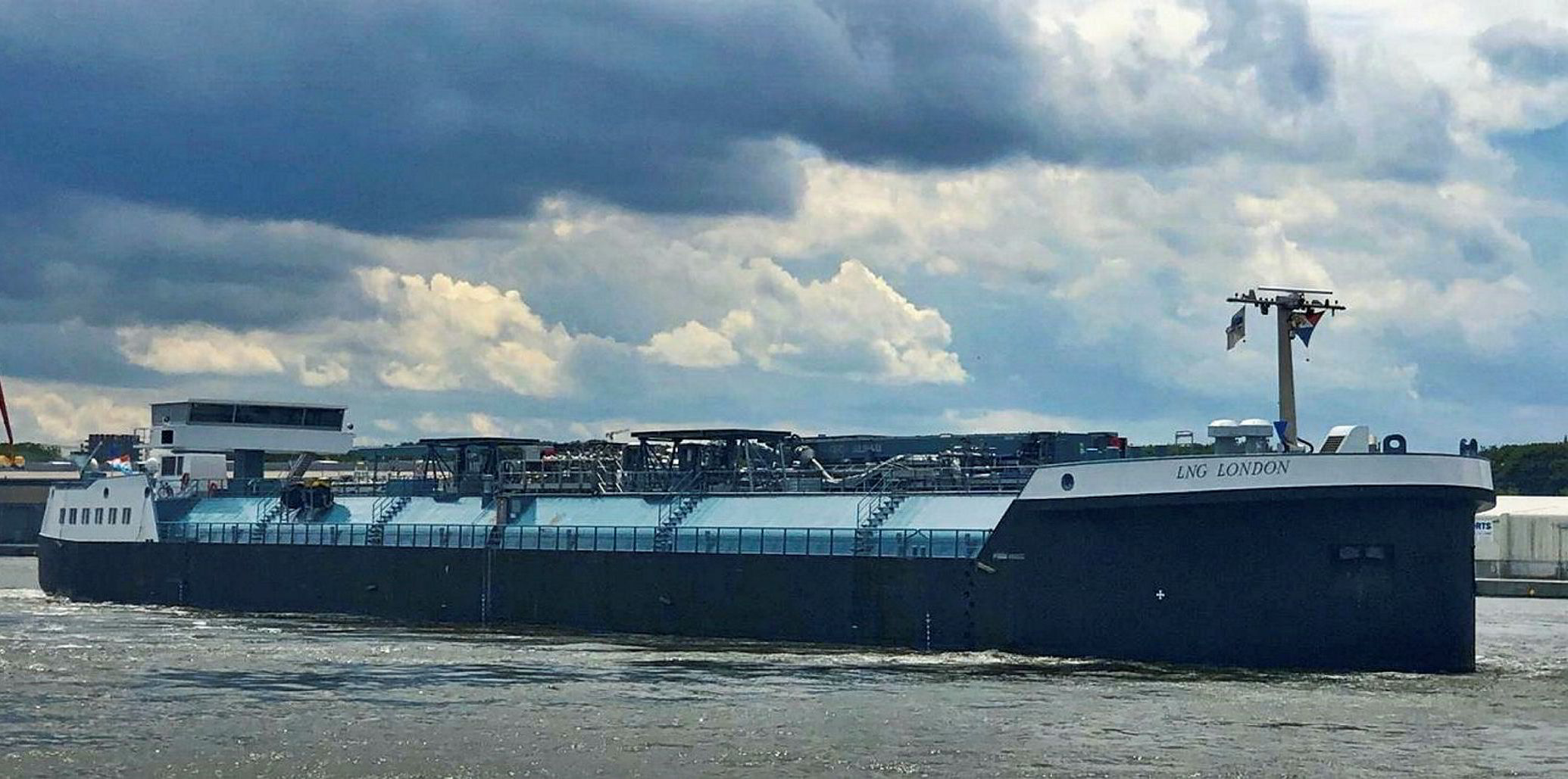It is a blazing hot afternoon in Amsterdam and down on the waterfront at Amerikahaven guests are toasting Titan LNG’s first newbuilding while a live bunkering operation quietly gets underway in the background.
It is a huge milestone for the Dutch start-up that unveiled its first design for an LNG bunkering unit to the world in 2016, has two more vessels in the pipeline and is growing its ambitions beyond Europe.
But in the heat of the naming ceremony event where ice creams are being served to cool the crowd, a friendly but fiercely contested debate is raging.
Is Titan LNG’s new bunker unit FlexFueler001 a pontoon or a barge?
Titan chief executive Niels den Nijs and Shell’s downstream LNG general manager Lauran Wetemans laughingly argue the toss on it.
Den Nijs had perhaps unwittingly, or maybe gently, provocatively precipitated the discussions by declaring his company’s new arrival the world’s first inland LNG bunker barge in the same week that Shell unveiled its own similar newbuilding, the 3,000-cbm LNG London.
The two vessels do have key differences.
The 1,500-cbm FlexFueler001 has its own quayside location, leased from the Port of Amsterdam where ships can come alongside to bunker, as with Nor Lines' 5,000-dwt ro-ro vessel Kvitbjorn (built 2015) on the barge’s naming day.
But if Titan wants to shift elsewhere to conduct operations, it needs to use its own-chartered, stern-based push-barge to move the unit.
The Shell-chartered LNG London, in contrast, has its own propulsion, and a larger capacity.
Den Nijs and Wetemans eventually settle on a definition tweak that allows FlexFueler001 to legitimately claim a new “first” title for the rapidly emerging LNG bunker vessel sector.
But the "battle of the barges" is just the sideshow in a month where two new LNG bunker units have been put into play in northern Europe, adding to the mix of fuelling options available to shipowners and operators.
Technically the two companies will compete for customers, but in reality, Shell will also use Titan LNG to provide LNG bunkering services and act as a LNG supplier to the company when required.
Both firms see it as another step on the road to offer LNG bunkering to the marine world and each has serious ambitions about how to grow this business and its own in the sector.
As the guests drifted home armed with a bar of surprisingly chilled Titan LNG chocolate or sought the shade of the quayside marquee, the Dutch contingent could be heard ramping up the party while the hum of operations at Amsterdam’s first LNG bunkering facility purred in the background.
Another piece of the LNG-fuelling jigsaw has been slotted into place. The puzzle continues.
